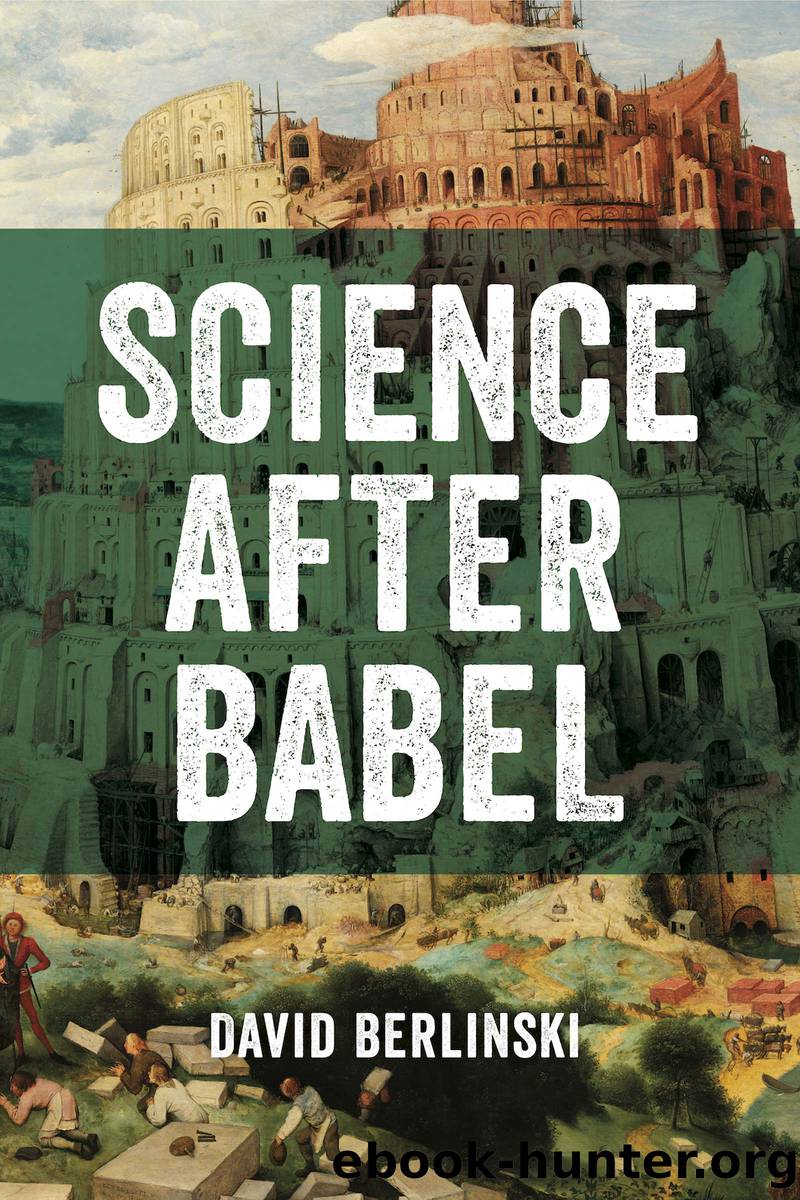Science After Babel by David Berlinski

Author:David Berlinski
Language: eng
Format: epub
ISBN: 978-1-63712-027-9
Publisher: Discovery Institute Press
Published: 2023-05-06T00:00:00+00:00
22. COMMENTS ON STUART PIVARâS LIFECODE
Lifecode: The Theory of Biological Self-Organization
BY STUART PIVAR
RYLAND PRESS, 164 PP.
LIFECODE IS AN AMBITIOUS AND PROVOCATIVE ATTEMPT TO DEAL with the problem of form in biology. It is ambitious because the nature and succession of biological forms, or morphogenesis, has been a subject of absorbing interest throughout the nineteenth and twentieth centuries, and it is provocative because it proposes a global solution to the problem of morphogenesis. The strength of this book lies in its detailed and remarkably beautiful illustrations. Its weakness is a matter of its disturbing lack of mathematical sophistication.
Pivarâs chief thesis is that all biological forms are in essence variations of the torus. More specifically, Pivar argues, as much by implication as affirmation, that given a reticulated torus T and its associated continuous deformations D = d1, d2, ⦠, dk; and given a variety of biological structures B = b1, ⦠, bn, there is a mapping G: D â B, such that G is form-preserving.1
If successive deformations of the torus are form-preserving, Pivar argues, this suffices to explain morphogenetic change. Thus in a paper dealing with chicken embryology, Pivar argues that a ârational account for the forms of the familiar stages of chick embryogenesisâ may be obtained âby demonstrating that the stages of the inversion of a reticulated toroidal surface can produce the same series of configurations.â
Biologists will at once respond that if a distinguished series of deformations of a torus explains the successive changes in the form of a chick embryo, then so does a series of still photographs. Why not, in fact, claim that the sequence of morphological changes evident in chicken embryology explains itself, since plainly there is one mappingâthe identity mappingâthat satisfies Pivarâs explanatory conditions? To duplicate biological structures at a distance by means of pictorial analogies is not yet to explain them. Pivar, it is true, very often writes as if the inversion of a reticulated torus represents some fundamental process in nature, but in Lifecode he neither expresses this hypothesis as a theorem nor demonstrates it as a fact.
In writing about the same issues in Structural Stability and Morphogenesis, René Thom observed that biologists find it difficult to believe âthat we can construct an abstract, purely geometrical theory of morphogenesis, independent of the substrate of forms, and the nature of the forces that create them.â2 Thom was quite correct. Biologists have found it difficult to believe this, and for good reason. It is not clear at all that forms in nature have a common origin and thus anything like a common explanation. A grapefruit and a baseball, after all, share the same form, but for entirely different reasons. An indifference to âthe nature of the forces that createâ morphological forms is not obviously an attitude calculated to improve our understanding.
Thom countered this criticism by arguing that under quite specific conditions, certain morphological forms appear necessarily in all structures falling under the same general descriptionâvery roughly, the space of all smooth maps between n-dimensional manifolds. He was then able to prove a strong classification theorem for the singularities of these maps.
Download
This site does not store any files on its server. We only index and link to content provided by other sites. Please contact the content providers to delete copyright contents if any and email us, we'll remove relevant links or contents immediately.
Bad Pharma by Ben Goldacre(3393)
How To by Randall Munroe(3073)
The Book of Numbers by Peter Bentley(2926)
Aliens by Jim Al-Khalili(2801)
A Short History of Nearly Everything by Bryson Bill(2653)
The Meaning of it All by Richard Feynman(2316)
Bill Bryson by A short history of nearly everything(1692)
A Short History of Nearly Everything: Special Illustrated Edition by Bill Bryson(1643)
Elephants on Acid by Boese Alex(1578)
Six Easy Pieces by Richard P. Feynman(1505)
Everything in Its Place by Oliver Sacks(1467)
The Meaning Of It All by Richard P. Feynman(1430)
Glukhovsky, Dmitry - Metro 2033 by Glukhovsky Dmitry(1343)
Bad Science by Ben Goldacre(1310)
When Einstein Walked with Gödel by Jim Holt(1282)
The American Scene by Henry James(1227)
One Two Three ... Infinity: Facts and Speculations of Science by George Gamow(1225)
Leviathan Wakes by James S.A. Corey(1203)
A SHORT HISTORY OF NEARLY EVERYTHING by bryson bill(1191)
